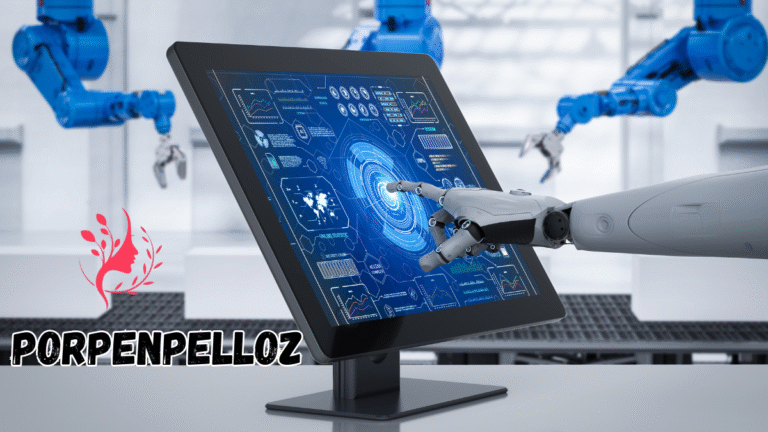In the ever-evolving world of innovation and creativity, few terms have stirred as much curiosity as porpenpelloz. From tech enthusiasts to cultural theorists, the word has begun appearing in discussions across different domains. But what exactly is porpenpelloz? Why is it capturing attention? This in-depth exploration dives into its meaning, applications, origins, and future potential, giving you a complete understanding of why porpenpelloz might become the next big thing.
What is Porpenpelloz? A Definition Beyond the Ordinary
At its core, porpenpelloz refers to a multidimensional framework that blends technology, culture, and adaptive systems. Think of it as a philosophy and a practical tool—a bridge between human creativity and intelligent systems.
But porpenpelloz isn’t just a concept. It’s a movement that aims to redefine how we interact with:
- Information systems
- Digital environments
- Community structures
In simpler terms, porpenpelloz is a dynamic methodology that adapts to its environment and evolves with user interaction.
The Origins of Porpenpelloz: Fact or Fiction?
The mysterious origins of porpenpelloz fuel its growing mystique. Some believe the term originated in underground hacker communities, while others trace it back to conceptual art movements of the early 21st century. There’s even a faction that attributes it to artificial intelligence experiments gone awry—where a neural network created “porpenpelloz” as a hybrid linguistic artifact.
Although its history is debated, one thing is certain: porpenpelloz has become a symbol of unconventional thinking.
The Core Principles of Porpenpelloz
To truly grasp porpenpelloz, it’s essential to break down its guiding principles. These tenets are what make the concept both futuristic and practical:

1. Adaptive Synergy
Porpenpelloz thrives on the idea that systems should evolve in harmony with users. Instead of static interfaces or rigid processes, it promotes fluid and adaptive design.
2. Decentralized Intelligence
Centralized control is passé. In the world of porpenpelloz, intelligence is distributed—whether it’s through blockchain technologies, AI collectives, or human networks.
3. Emotional Resonance
Unlike traditional frameworks that prioritize logic, porpenpelloz embraces emotional intelligence. It encourages systems to recognize, respond to, and even predict emotional states.
Applications of Porpenpelloz in Modern Society
Porpenpelloz isn’t limited to theoretical musings. Its practical applications span multiple industries, making it a versatile tool for transformation.

In Technology
Imagine operating systems that don’t just respond—they anticipate your needs. Porpenpelloz could lead to a new generation of predictive AI platforms, seamlessly blending with daily workflows.
In Education
Learning models infused with porpenpelloz principles could personalize curricula to individual students, catering to their strengths and weaknesses dynamically.
In Urban Design
Smart cities could harness porpenpelloz for adaptive infrastructure, where traffic systems, energy grids, and community spaces evolve with population trends.
In Art and Culture
Artists and creators are already experimenting with porpenpelloz-inspired projects. Interactive installations that adapt in real time to audience engagement are just the beginning.
The Unique Architecture of Porpenpelloz Systems
Unlike traditional linear systems, porpenpelloz frameworks adopt a multi-layered, recursive architecture. This means:
- Layer One: Core algorithms designed for adaptability.
- Layer Two: Sensory integration for real-world data collection.
- Layer Three: Human-centric emotional and cultural feedback loops.
- Layer Four: Decentralized processing nodes for resilience.
This layered approach ensures porpenpelloz systems remain robust yet flexible.
Porpenpelloz vs. Traditional Systems: A Comparative Analysis
| Feature | Traditional Systems | Porpenpelloz Systems |
|---|---|---|
| Adaptability | Low | Extremely high |
| Emotional Intelligence | Minimal | Core component |
| Scalability | Limited by design | Infinite via decentralization |
| User-Centric Evolution | Absent | Fully integrated |
| Predictive Capability | Reactive | Proactive & anticipatory |
This comparison highlights why porpenpelloz is generating such excitement across industries.
The Challenges of Implementing Porpenpelloz
As with any transformative concept, porpenpelloz isn’t without challenges:
- Complexity of Design: Building adaptive systems requires multidisciplinary collaboration.
- Ethical Concerns: Systems that anticipate emotional responses must be designed responsibly.
- Technological Barriers: Current infrastructure may not fully support porpenpelloz frameworks.
These hurdles, however, are not insurmountable. Innovators worldwide are already working on solutions.
Future Trends: Where Will Porpenpelloz Take Us?
The future of porpenpelloz is as boundless as its design. Here are some anticipated trends:
- Adaptive AI Ecosystems: From personal assistants to corporate systems.
- Emotionally Aware Smart Homes: Your home will “feel” your mood and adjust accordingly.
- Decentralized Cultural Hubs: Communities evolving organically through porpenpelloz networks.
As adoption grows, porpenpelloz could become a household term synonymous with innovation.
Frequently Asked Questions About Porpenpelloz
Is porpenpelloz a real technology or a concept?
Porpenpelloz is both a conceptual framework and an emerging technological methodology.
How can businesses use porpenpelloz?
Businesses can apply porpenpelloz principles to customer experience design, predictive analytics, and adaptive infrastructure.
Will porpenpelloz replace existing systems?
Not immediately. It’s more likely to augment and evolve current systems over time.
Conclusion: The Dawn of the Porpenpelloz Era
Porpenpelloz represents more than a buzzword. It’s a paradigm shift that challenges how we design, interact with, and experience systems in the digital and physical world. With its focus on adaptability, emotional intelligence, and decentralization, porpenpelloz promises to reshape industries and everyday life.
As we stand at the threshold of this new era, one question remains: Are we ready to embrace the porpenpelloz revolution?
For more information visite the website

